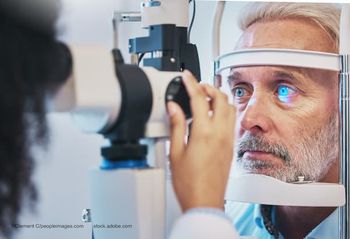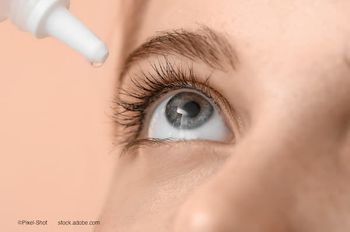
- Ophthalmology Times: February 1, 2021
- Volume 46
- Issue 2
Exploring possibilities of myopia prevention and control in the US
Investigators reviewing options that include bifocals, low-dose atropine drops
This article was reviewed by Michael X. Repka, MD, MBA
Among ophthalmologists, interest in preventing and controlling myopia has increased markedly in the United States, including how increased outdoor activity can be implemented. Combination therapies under study include bifocals and low-dose atropine drops.
No one doubts that myopia is progressing in the nation; this has been a concern since 1989, when the CLEERE study1 (NCT00000169) including more than 4500 schoolchildren followed over time reported that 9.2% were myopic, 12.8% hyperopic, and 28.4% astigmatic.
Related:
A total of 605 children who were emmetropic at baseline ultimately became myopic by a minimum of –0.75 diopter (D); this finding was common to all racial and ethnic groups, and a 0.5-D increase was seen annually.
This annual change, according to Michael X. Repka, MD, MBA, is the basic rate to which myopia control treatments could be compared. He is a professor of ophthalmology and pediatrics at Johns Hopkins University in Baltimore, Maryland.
In the early 2000s, the FDA’s focus was on determining value of pharmacologic therapy for myopia.
In 2016, the FDA Center for Devices and Radiological Health considered contact lenses (CLs) and other medical devices for their potential role in controlling myopia. In both centers, the goal was to develop guidelines for what constituted a suitable level of control.
Drug therapy
Although not approved by the FDA, atropine 1% had long been considered a therapy for myopia and seems to work well, Repka noted, when it was evaluated in nonrandomized trials as well as in the ATOM study2 [NCT03140358] of myopia progression; however, the adverse effects (AEs) associated with the drug have reduced its popularity.
Related:
Pirenzepine (Gastrozepin; Darnista Pharmaceuticals), another candidate for myopia therapy, in a randomized control trial showed a mean 0.58-D increase in myopia in the active treatment group compared with a 0.99-D increase in the placebo group at the 2-year time point.
Both the lack of a significant effect and loss of 26% of study patients due to AEs were concerns. The drug was never approved in the United States for this indication.
The 5-year results of the ATOM study2 had a profound impact on the way low-dose atropine 0.01% eyedrops were viewed in the United States.
The study showed that the treatment dose that was considered the placebo group was more effective than the higher drug concentrations.
Related:
This finding was bolstered by the LAMP study3 (NCT02130167) that tested 3 doses of the drug and a placebo; the 1-year results showed that the 0.05% dose was superior to the 0.025% and 0.01% doses.
Not only were the rates of progression positively affected but the axial lengths were impacted as well.
“The axial length progression is really the issue that we want to stop, because it is what is associated with retinal damage,” Repka emphasized.
The 2-year LAMP data also showed that the 0.05% dose continued to have a better effect than the others tested. Because the LAMP study found the 0.01% treatment to be less effective than in the ATOM1 study, this finding has led to debate about the most effective atropine dose.
Current US approaches
Five behavioral and optical approaches are now considered acceptable in the United States for controlling myopia.
The first, avoidance of extensive and prolonged near work, gets mixed scientific reviews, but patients can resort to this without AEs.
Related:
Removing glasses for near work is another easy method for older patients, although adherence is an issue for children.
Use of bifocals, both near segments and progressive lenses, is associated with some supportive clinical trials data in that they reduce accommodation and positively affect any changes caused in the eye.
The COMET study4 (NCT00000113) compared progressive-add lenses with single-vision lenses over 3 years. Myopia progressed in both groups, 1.25 D and 1.48 D, respectively.
The progressive-add lenses significantly slowed progression, but not enough to be felt clinically relevant.
The COMET2 study5 (NCT00320593) looked at a subset of patients identified in the previous COMET study who had accommodative lag and seemed to benefit most in the previous study.
Related:
The analysis showed that the change in myopia over 3 years—that is, –1.15 D in the single-vision group and –0.87 D in the progressive-add lens group—was nearly the same as in the first COMET study, demonstrating no clinically significant benefit, Repka commented.
CLs to control myopia are being used increasingly. Little data support the use of monofocal soft CLs. In contrast, orthokeratology may have a meaningful role in controlling myopia progression (studies underway), and careful patient choice as candidates for the treatment is important.
Dual-focus CLs (center focus and peripheral defocus) have been found to slow myopia progression, possibly by inducing myopic peripheral defocus while providing clear foveal vision, Repka said.
“The concept in this technology is that myopic defocus caused by a typical lens causes ocular elongation, and this lens design eliminates that by pulling the image into the vitreous, which stops that process,” he explained.
MiSight CLs (CooperVision), the only approved daily-wear, single-use, single-vision lenses that use this concept, are prescribed for children aged 8 to 12 years with myopia ranging from
–0.75 D to –4.0 D of spherical equivalent with low astigmatism.
The BLINK study6 (NCT02255474) evaluated 3 FDA-approved disposable month lenses (Biofinity) worn during the day, spherical lenses (control) and 2 bifocal CLs with different reading powers of +1.5 and +2.5 powers to attempt to slow myopia. The children, aged 7 to 11 years, were followed for 3 years.
Related:
The results showed –0.6 D for the high add power, –0.89 D for the medium add power, and –1.05 D for the spherical lenses, indicating that the progression rate was slowed by about 0.5 D at 3 years.
“This result is comparable to that achieved with low-dose atropine and more powerful than observed with bifocals,” Repka commented.
Low-dose atropine continues to be studied in the United States, but the optimal dose has not been pinpointed.
Currently, there is great interest in the United States about clinical care that can be offered to prevent myopia and myopic progression. Increased outdoor activities have also been of interest because studies have shown some positive impact.
Combination therapies of outdoor activity, bifocals, and low-dose atropine are being evaluated. At this point, a big concern when considering future studies is parental support for use of a control group of children for 2 or 3 years or longer.
--
Michael X. Repka, MD, MBA
e:[email protected]
Repka reported receiving grant support from the National Eye Institute for the PEDIG study of myopia control with low-dose atropine.
--
References
1. Mutti DO, Hayes JR, Mitchell GL, et al; CLEERE Study Group. Refractive error, axial length, and relative peripheral refractive error before and after the onset of myopia. Invest Ophthalmol Vis Sci. 2007;48(6):2510-2519. doi:10.1167/iovs.06-0562
2. Chia A, Lu QS, Tan D. Five-year clinical trial on atropine for the treatment of myopia 2: myopia control with atropine 0.01% eyedrops. Ophthalmology. 2016;123(2):391-399. doi:10.1016/j.ophtha.2015.07.004
3. Yam JC, Li FF, Zhang X, et al. Two-year clinical trial of the low-concentration atropine for myopia progression (LAMP) study: phase 2 report. Ophthalmology. 2020;127(7):910-919. doi:10.1016/j.ophtha.2019.12.011
4. Gwiazda J, Hyman L, Hussein M, et al. A randomized clinical trial of progressive addition lenses versus single vision lenses on the progression of myopia in children. Invest Ophthalmol Vis Sci. 2003;44(4):1492-1500. doi:10.1167/iovs.02-0816
5. Correction of Myopia Evaluation Trial 2 Study Group for the Pediatric Eye Disease Investigator Group. Progressive-addition lenses versus single-vision lenses for slowing progression of myopia in children with high accommodative lag and near esophoria. Invest Ophthalmol Vis Sci. 2011;52(5):2749-2757. doi:10.1167/iovs.10-6631
6. Walline JJ, Walker MK, Mutti DO, et al; BLINK Study Group. Effect of high add power, medium add power, or single-vision contact lenses on myopia progression in children: the BLINK randomized clinical trial. JAMA. 2020;324(6):571-580. doi:10.1001/jama.2020.10834
Articles in this issue
almost 5 years ago
Do you 'need' or just 'want' that new diagnostic imaging device?almost 5 years ago
Noninvasive angiography with OCT offers definite valuealmost 5 years ago
Ophthalmology residents retrained as palliative care extendersalmost 5 years ago
How AAOOP is taking the pandemic by the hornsalmost 5 years ago
EyePod: Ophthalmologist shares Holocaust survival storyalmost 5 years ago
Investigators examine anti-VEGF medications in cases with ROPalmost 5 years ago
Tool offers ultra-rapid cooling for intravitreal injectionsNewsletter
Don’t miss out—get Ophthalmology Times updates on the latest clinical advancements and expert interviews, straight to your inbox.














































.png)


